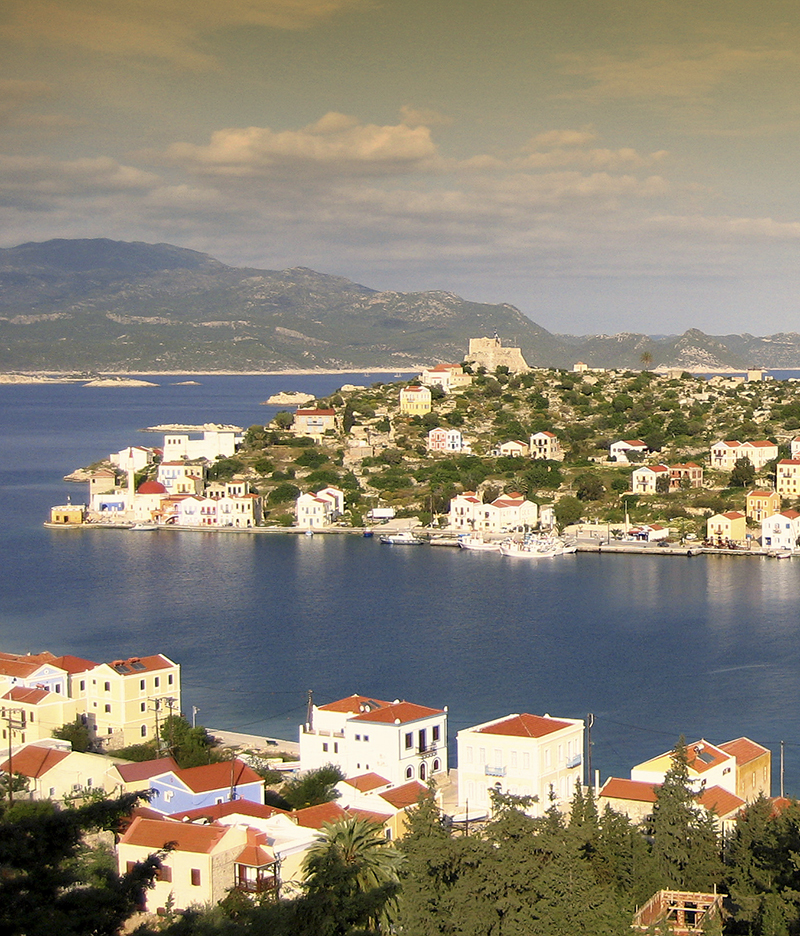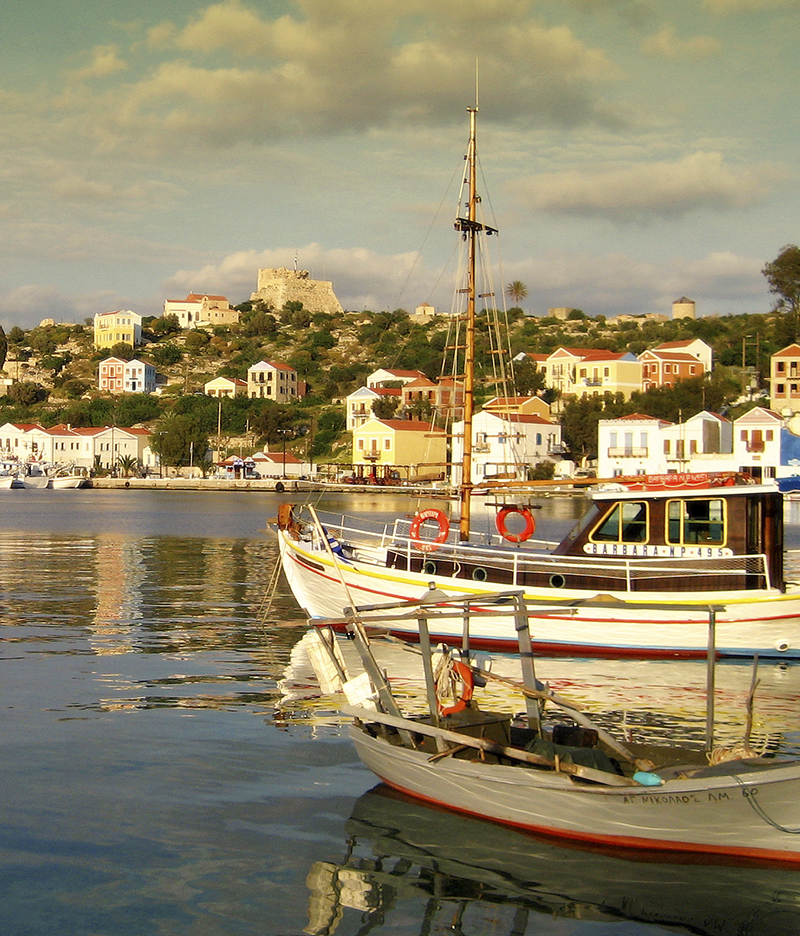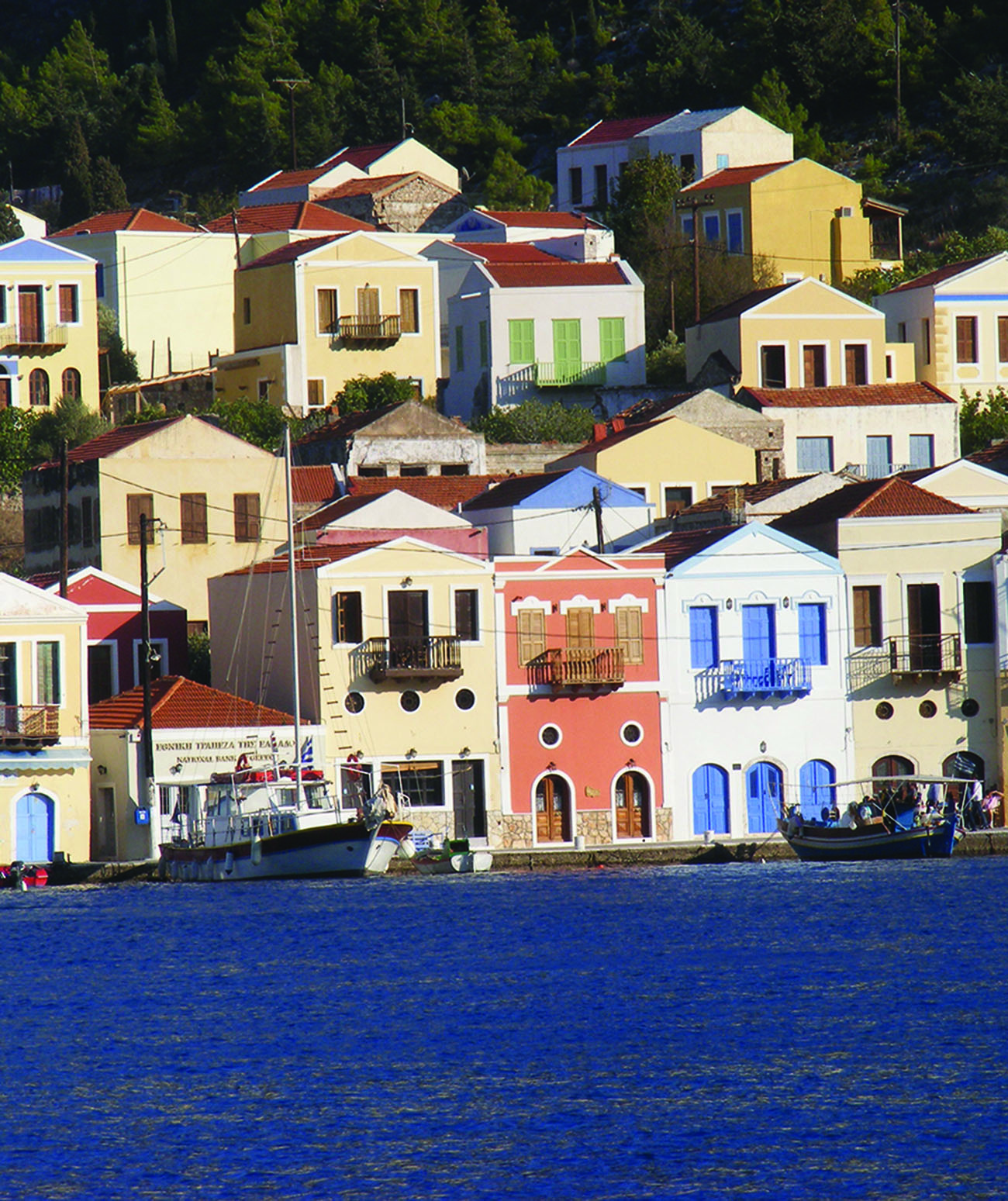Kastellerizo & Meis
We are going to visit the island closest to Turkey… Meis (Megisti) now more romantically known as Kastellorizo! The island went through the same row of rulers as the other Dodecanese. A staging post between Rhodes and Cyprus it had a population of up to 9.000 in 19th C. At the beginning of the last century the island was occupied by the French, then in 1923 by Italy and eventually ceded to Greece in 1947 when the population heaved a sigh of relief… ’home at last’!
But the logistics were not so easy!… Kastellorizo is a large triangular barren rock all of 115 km from Rhodes and a stone’s throw from the Turkish mainland. It has no water, no livestock… just plenty of fish. The Island’s pride is its horseshoe-shaped harbour which practically interlocks with its opposite number at Kas.
Behind the harbour’s pristine waters rise rows of stone cottages in four tiers. Prior to the arrival of modern technology an ‘upper-tier conversation’ could be had from the island with a Turkish quayside neighbour aided by a flag or a whistle. When the Islanders needed meat, binoculars were used to view the purchase of possible livestock. Rhodes too busy running touristic ferry services to the other Dodecanese Islands had little interest in Kastellorizo, except intent on supporting the diminished population, sent boatloads of much welcome charitable nonperishables every few weeks. As Turkey was not then in the European Customs Union such non-perishables as Whisky and Nescafe etc found their way to Kas and beyond via a sophisticated barter system set up in view of… but not by… the pertinent Harbour-masters!
In return from the mainland fresh vegetables, spring water, livestock and most importantly fresh white loaves of bread would be exchanged…
Meis (Megisti) now more romantically known as Kastellorizo!
According to custom on the appointed day the Turkish bakers would rise earlier than usual for a busier bake and any pre-ordered goats and sheep would assemble on the Quay, while vats of spring-water and vegetables would arrive from the surrounding hills; all to await the large fishing boat generally carrying the priest (who preferred Turkish tobacco to the everyday Marlboro) and the precious cargo. Within an hour and the time it took for the two harbour masters to agree that value was given for value accompanied by a conciliatory glass of Raki, the operation would be completed.
Almost at war Kastellorizo needed re-populating……
Over the next decade second-generation emigres from the island to Australia… all with Greek surnames but little of the language… were invited to return to their fatherland with the promise of housing and financial aid… they were known as ‘Kazzies’!
And they came!
They restored the beautiful harbour houses so typical of Dodecanese architecture, repainting the large wooden fronted doors in emerald, mustard, indigo… Those close to the harbour extended their front terraces; sea-food restaurants opened.
Regular ferry services started from Rhodes… a 4 hour journey.
In 1991 an award-winning film was made on the island and tourism truly arrived.

Kas (mainland Turkey at the background)

the remains of a double-walled Castle on the hill
Today there is a 20 minute service every day from Kas to Kasto… passports being handed in for scrutiny the night before. For yachts there is good but limited anchorage in the harbour. Many of the houses are now Airbnb. There are two small hotels and as far as the writer knows the Island is deemed suitable for sustainable development only…and that is its great charm…’small is beautiful’.
Apart from a good meal in a very picturesque setting there is more than enough to do on a day-trip from Kas.
If a swim is essential…and the sea is super-clean…to the west of the Island is the small sandy beach plus a pebbly beach ‘Mandra’ki to the east.
For those interested in history walk up the cobbled street to the 18th C. mosque, now a small museum with Byzantine artefacts, articles of clothing and documents. On the hill behind are the remains of a double-walled Castle… extended by the Knights of St John in 14th C. Further to the east is the pebble beach of Mandraki with a Lycian house tomb on the hill beside it!
Further on the Cathedral Church of St Helen and Constantine is open to all. The desalinisation plant nearby is not! The highest point on the Island is 270 m… which is also out of bounds…a military area from where the Turkish Navy’s sea manoeuvres are scrutinised. The more adventurous can climb up to the ruins of the fortified monastery dedicated to St George. The views are splendid. The amphi-like symmetry of the harbour, a turquoise sea as its stage and the multi pastels of the houses backed by the light charcoal of the rock are inspiration for any `artist or poet. So to the accompaniment of a Greek coffee or Ouzo why not just relax and take up your pen!





